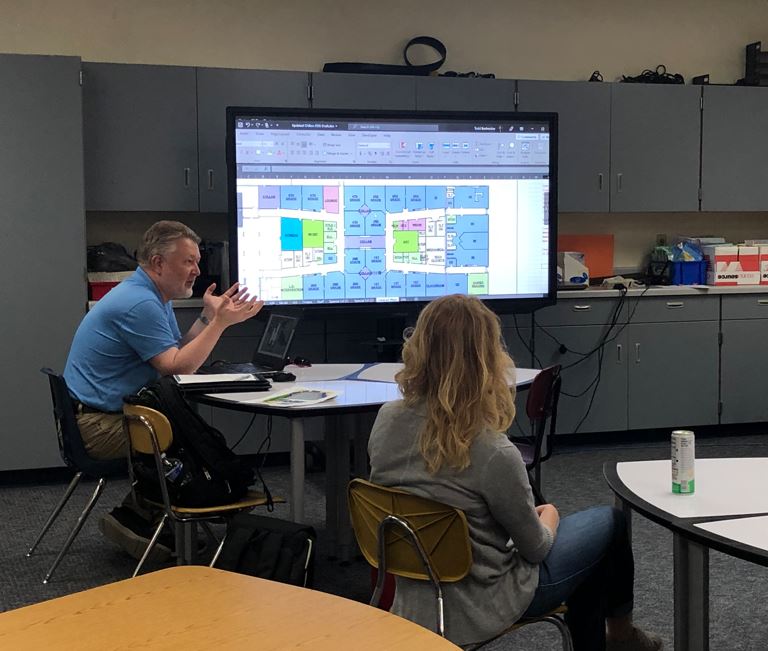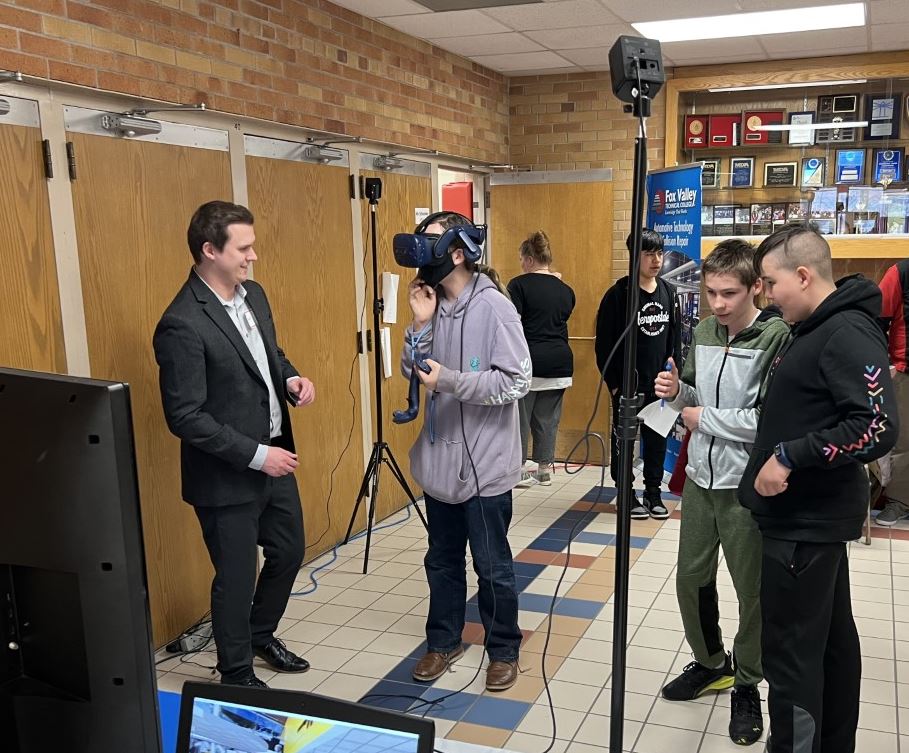Many times, the biggest challenges foster a season of great innovation. COVID-19 was devastating to countless people, but it spurred school administrators and their design teams to new heights on how to communicate effectively and efficiently with those impacted by building programs. What follows are key lessons learned and prospects that you can use to sharpen your own skills for your next construction endeavor.
COMMUNICATE & COLLABORATE FOR SUPERIOR OUTCOMES
Transparency and openness are critical building blocks for a successful bond election or referendum. It is commonly accepted that when you maximize community engagement, obtaining community buy-in is much easier. Throughout the pandemic, we saw clearly that we can communicate more effectively by using the right tools at the right time. While communication is most successful when people are together and engaged, we saw many examples over the last two years of how technology makes it easier for public participation by allowing more people to tune in and interact virtually. The expanded use of such platforms as Zoom, Google Meet, and Microsoft Teams have allowed community members, parents, grandparents, and others to engage in meetings and events like never before.

Not only have online meetings revolutionized how we collaborate with district leadership and key stakeholders throughout the design process, but they have also given community members increased opportunities to engage with us and have their voices heard. We should always consider which type of meeting will give us the highest opportunity for achieving community buy-in. Sometimes the answer will be in-person meetings and at other times the right choice will be to provide online options. When preparing for your next community communication, be sure to evaluate which option will give you the best results.
Consistently providing timely updates is vital to a successful project. Utilizing various platforms for communication and offering a wide range of meeting times and locations allows you to communicate with more people while demonstrating your desire to connect. This increases trust, which improves the effectiveness of communication — and ultimately the success of your facility project.
THE SIGNIFICANCE OF OPPORTUNITIES TO INTERACT
It is perhaps more important than ever to provide opportunities to encourage interaction between communities and school districts. In many instances, negative public perception has been experienced by school districts due to measures that were taken to deal with the pandemic. Thanks in large part to the enhanced role that parents played in their child’s education, the pandemic has fueled increased community involvement in our schools. It is imperative that we recognize the importance of providing additional opportunities for communities, parents, and school districts to unite. When this occurs, students benefit most from the collaboration to address significant problems like depression, hunger, and homelessness.
Transparency and openness are critical building blocks for a successful bond election or referendum.
Our connections should concentrate on future thinking and situations that do not involve pandemic-related issues. We should all engage in positive growth goals for the school district and community. It is helpful to have healthy, long-term issues to focus on and look beyond the short-term implications of dealing with the pandemic. When we focus on the mountain summit ahead of us, moving forward together, we no longer focus on the small obstacles along the path.
NEW TOOLS IN OUR TOOLBELT
Our revised methods of communicating are complemented by technology innovations that refine processes, deliverables, accuracy, and communication. Educational leaders are the beneficiaries of these emerging technologies and can use them when working with community constituents. If COVID-19 had occurred just 10 years earlier, we wouldn’t have been adept at using these tools to communicate design intent and perception. Now, utilizing available technology, we can receive faster feedback and swiftly test new concepts and options. We no longer need to wait for a slated in-person meeting of parties to obtain opinions or seek insights. Below are some of the tools that are available to help us share ideas — and design collaboratively and more effectively.

THE REALNESS OF AUGMENTED REALITY
Today, those of us in the building industry and our clients can fasten on a pair of hi-tech goggles containing sophisticated software and see a holographic and interactive view of projected building concepts and layouts. Augmented reality combines architectural vision with the real world, providing a highly accurate view of what the future building could look like. As concepts, plans, and designs develop, clients, stakeholders, and the architectural team can see designs come to life, then view modifications to the plans in mere minutes.
With augmented reality, one can overlay a digital model with current information in the physical world. You can see where a door or wall is planned to be installed while “walking” the construction site. You can see a complete building from various positions on the property, comparing different views and angles. Virtual and augmented reality take some of the unknown out of the planning process, allowing stakeholders to consider more accurately what could be. These technologies reduce rework and frustrations, ultimately allowing design professionals to create better, more functional buildings.
LASER SCANNING FOR GREATER ACCURACY
Another technology that enhances facility design is laser scanning. You can now obtain an accurate representation of existing buildings and systems, which can then be “clashed” or modeled against current building data for proper coordination of system upgrades. This technology has a wide range of applications and can allow one to visualize existing conditions beyond just taking photos and taped measurements.
Educational leaders are the beneficiaries of these emerging technologies and can use them when working with community constituents.
An added benefit of laser scanning is present throughout the construction process, with the ability to compare the installed progress against the digital model to evaluate accuracy. This provides for the adjustment of future prefabricated items before delivery and installation, while also providing an extremely accurate method of tracking percentage of completion.
VIRTUAL REALITY BECOMES COMMON PLACE
Have you ever been part of a construction project where the constructed space was significantly different than what you expected? Virtual reality bridges the visual gap and allows you to go through a space by “walking” into your design, observing materials, volume of space, lighting, and more. You are also able to envision vital details and answer such questions as:
- What is the line of sight from the front public area?
- Will students and guests readily be able to find their way because the flow naturally makes sense?
- Based on the anticipated enrollment, does the arrangement of classrooms adequately meet the need?
LEVERAGING THE LESSONS GOING FORWARD
With the heightened levels of parental involvement and their increased understanding of the amount of effort that is needed to educate our children, we are experiencing more productive collaboration. Capitalizing on increased technological options for gaining input and improving communication, you can now capitalize on these opportunities to build momentum for your next construction project.
It is crucial to determine and document what educators have learned in providing education during the pandemic and retain the best practices. Similarly, the community needs to realize the current issues created during this season, such as staffing challenges, and seek to address them with enhanced design solutions. For everyone, there needs to be a renewed focus on addressing social and emotional issues for both students and staff.
LESSONS LEARNED; SOLUTIONS APPLIED
Students and teachers are different now. Our culture has changed. The importance of flexibility and adaptability in our school designs has arguably never been greater. We must seek opportunities to engage key stakeholders with technology, and we have to prepare our students for a workplace that may involve working remotely or in a hybrid model. Be sure that the lessons learned under severe conditions are not wasted, but that they produce opportunities for a stronger future for our students, teachers, and community!

